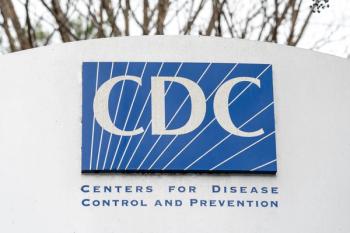
Pharmacists, Telehealth May Improve Diabetes Care During Emergencies
In the context of the COVID-19 pandemic, researchers investigated how insulin use and glycemic control were associated among patients with type 2 diabetes.
Consistent insulin therapy has the potential to significantly maintain glycemic control during health care disruptions, such as during the COVID-19 pandemic, according to data from a study published in Pharmacy (Basel).1 Researchers’ findings show that the integration of telehealth and pharmacist-led interventions can bolster diabetes care during major health care emergencies.
“The onset of the COVID-19 pandemic in March 2020 triggered widespread disruptions across health care systems worldwide, posing challenges for individuals managing type 2 diabetes (T2D),” wrote the study authors. “The implementation of public health measures, including lockdowns and social distancing protocols, potentially hindered access to routine medical care and medications, exacerbating the difficulties faced by [patients with] diabetes.”
While the impact of the COVID-19 pandemic affected patients and providers worldwide, pharmacists were placed in an unprecedented position once lockdowns were enforced. One of the most important roles pharmacists took on during the pandemic was as immunizers, providing increased access to the COVID-19 vaccine in minimal time.
Aside from distributing vaccines at life-saving rates during the pandemic, many pharmacists also became experts on drug-supply chains, telehealth services, ambulatory pharmacy services, digital software, dispelling misinformation, and more.2
READ MORE:
Furthermore, on top of the role pharmacists undertook to combat COVID-19, they have also exhibited significant expertise in the diabetes space before, during, and after the pandemic. According to study findings published in Diabetes, Metabolic Syndrome and Obesity, pharmacists’ roles have evolved, making pharmacists the key administrators of 5 tasks within diabetes care. Those roles include disease state management, medication review, cost containment, preventive care, and medication adherence.3
Although the prominence of diabetes is growing, along with the need for providers to manage patients’ diseases, few data exist on managing insulin for patients with diabetes during a public health emergency that disrupts normal flows of care.
“The objective of this retrospective cohort study is to assess the association between insulin use and glycemic control, as measured by changes in hemoglobin A1c levels, among patients with T2D during the COVID-19 pandemic,” the authors continued.1 “This study also explores patterns of medication use that may have contributed to changes in [hemoglobin] A1c control.”
The researchers conducted a retrospective analysis of clinical and prescription drug data from family medicine clinics. Their main time frames included the pre–COVID-19 period from March 1, 2019, to March 13, 2020, and the period during the pandemic, from March 14, 2020, to March 31, 2021.
The researchers’ primary outcome was patients’ glycemic control, or their change in hemoglobin A1c (HbA1c) levels. With a controlled HbA1c level defined as below 8%, patients were separated into 4 groups based on their HbA1c status before and during the pandemic: uncontrolled, controlled, improved, or worsened. The researchers also explored insulin and noninsulin medication use during these periods, and whether or not patients increased, decreased, introduced, or discontinued medications during the pandemic.
A total of 992 patients (mean age, 56; 54.5% women) were included in the final analysis.
“As in other studies of patients [with diabetes] during the pandemic, we did not find a worsening of [Hb]A1c levels despite disruptions in care among the...patients in 2 safety net family clinics,” wrote the authors.1 “Our case series review showed that most patients whose [Hb]A1c improved were on insulin, compared [with] those whose [Hb]A1c worsened. During the COVID-19 era, this population experienced significant disruptions in diabetes management due to social distancing policies,...clinic closures, and other pandemic-related challenges.”
The most notable findings from the researchers’ review were that only a portion (24%) of patients saw any changes in their HbA1c levels. Although 128 improved and 110 worsened, the main factor highlighted in those who saw improvements was insulin use, whether administered through telehealth services or pharmacist-led interventions.
The findings suggest that consistent insulin use for patients with T2D is the best approach for maintaining HbA1c levels during future public health disruptions. Although not exclusive to emergency situations, telehealth services and pharmacist interventions took a leap forward and exhibited significant success in improving patient outcomes during the pandemic.
Future research will explore the pharmacist’s further role in managing diabetes during a health care disruption and other ways to ensure equity and resilience during events such as the pandemic.
“These findings suggest that consistent insulin therapy may have helped maintain glycemic control despite health care disruptions,” the authors concluded.1 “This study highlights the importance of sustained medication management and suggests that integrating telehealth and pharmacist-led care could support diabetes control during future health care system challenges.”
READ MORE:
Pharmacy practice is always changing. Stay ahead of the curve: Sign up for our
References
1. Opara C, White A, Fulda KG, et al. Type II diabetes mellitus and COVID-19: exploring insulin management in patients from family medicine clinics. Pharmacy (Basel). 2025;13(4):93. doi: 10.3390/pharmacy13040093.
2. Pantasri T. Expanded roles of community pharmacists in COVID-19: a scoping literature review. J Am Pharm Assoc (2003). 2022;62(3):649-657. doi:10.1016/j.japh.2021.12.013
3. Orabone AW, Do V, Cohen E. Pharmacist-managed diabetes programs: improving treatment adherence and patient outcomes. Diabetes Metab Syndr Obes. 2022;15:1911-1923. doi:10.2147/DMSO.S342936
Newsletter
Pharmacy practice is always changing. Stay ahead of the curve with the Drug Topics newsletter and get the latest drug information, industry trends, and patient care tips.






































































































































